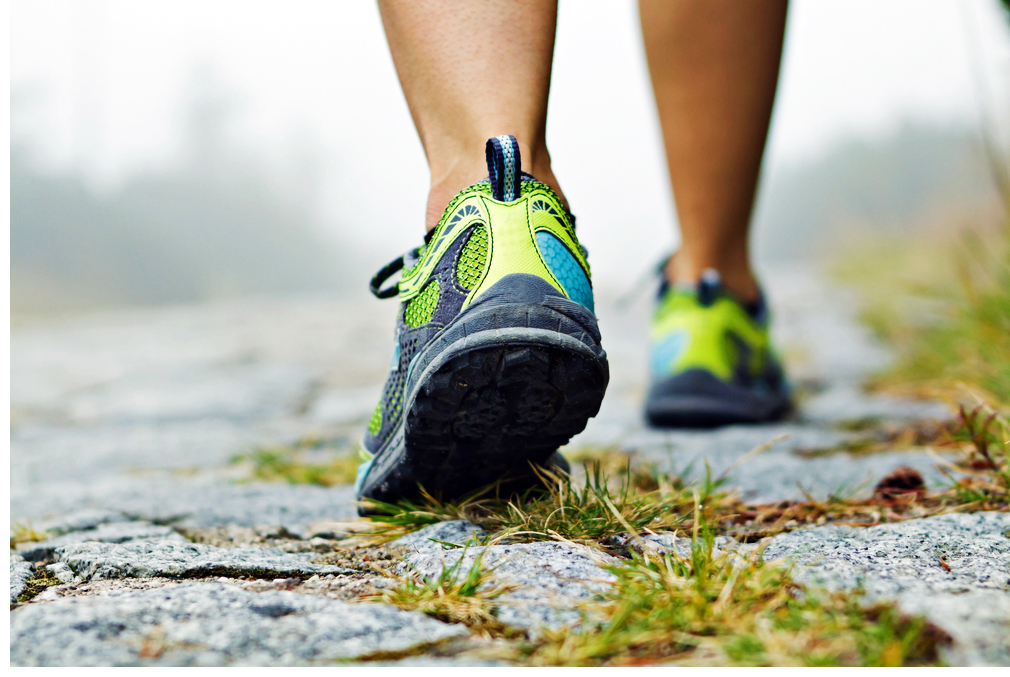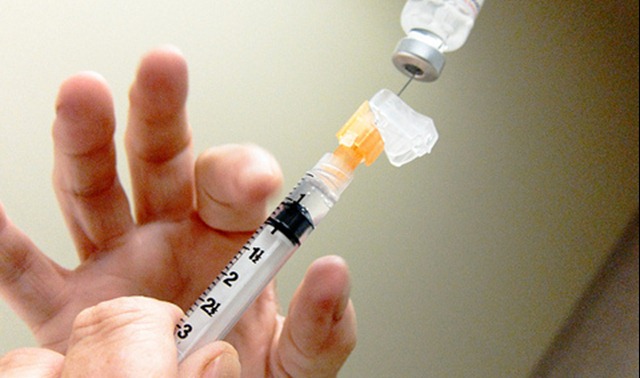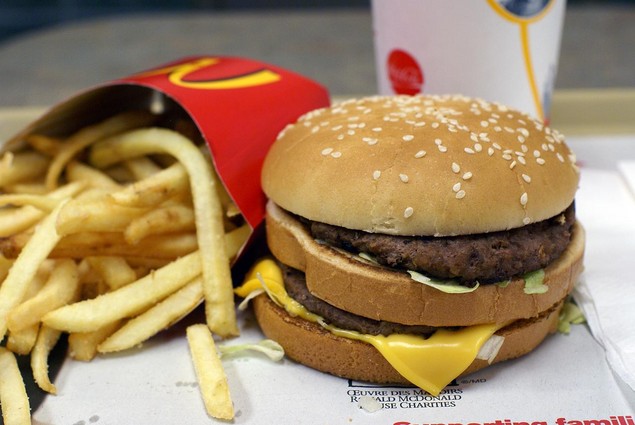Adopting a habit of “intermittent fasting” that involves foregoing food every other day may eventually lead to weight loss and improve cognition in heavier patients, researchers reported here. In a single-center, randomized, pilot study, patients who fasted completely every other day lost about the same amount of weight over 2 months as those who didn’t fast at all… But at 6 months, after patients were technically off the intervention, those who had the initial “intermittent fasting” intervention had greater weight loss and greater improvements in cognitive function than those on a standard diet, Donahoo reported… In an earlier paper, Mattson wrote that intermittent fasting is consistent with the way humans evolved to eat. “From an evolutionary perspective, intermittent fasting is normal, and eating 3 meals a day plus snacks is abnormal. Going without food for most of the day or even for several days is a challenge that we are very capable of meeting,” he stated.
Nut consumption has long been linked to healthy lifestyles. Now, a study in the New England Journal of Medicine extends the finding and demonstrates a strong association with improved mortality. Ying Bao and colleagues examined data from nearly 120,000 people enrolled in the Nurses’ Health Study and the Health Professionals Follow-up Study to assess the relationship of nut consumption and mortality. With over 3 million person-years of follow-up, the investigators found a strong inverse correlation between the frequency of nut consumption and mortality, after adjusting for other risk factors.
Energy drinks packed with caffeine can change the way the heart beats, researchers warn. The team from the University of Bonn in Germany imaged the hearts of 17 people an hour after they had an energy drink. The study showed contractions were more forceful after the drink. The team told the annual meeting of the Radiological Society of North America that children and people with some health conditions should avoid the drinks. They showed the chamber of the heart that pumps blood around the body, the left ventricle, was contracting harder an hour after the energy drink was taken than at the start of the study. Dr Dorner added: “We’ve shown that energy drink consumption has a short-term impact on cardiac contractility. “We don’t know exactly how or if this greater contractility of the heart impacts daily activities or athletic performance.” The impact on people with heart disease is also unknown. However, the research team advises that children and people with an irregular heartbeat should avoid the drinks.
Source: BBC
Walking, fast or slow, is wonderful exercise. But now a first-of-its-kind study shows that to get the most health benefits from walking, many of us need to pick up the pace.
The findings stem from a new analysis of the National Walkers’ Health Study, a large database of information maintained at the Lawrence Berkeley National Laboratory about thousands of middle-age men and women who walk regularly for exercise. Recruited beginning in 1998 at walking events and from lists of subscribers to walking-related publications, these volunteers filled out a lengthy survey about their typical walking distance and pace, as well as their health history and habits.
As most of us would likely guess, walking is the most popular physical activity in America. But people who walk for exercise do so at wildly varying speeds and intensities. Some stroll at a leisurely 2 miles per hour, which is low-intensity exercise. Others zip along at twice that pace or better, resulting in a sweatier workout.
Exercise guidelines generally suggest that for health purposes, people should engage in 30 minutes of moderate-intensity activity most days of the week. For walkers, a moderately intense pace would probably be about 15 or 16 minutes per mile.
It has generally been assumed that if people walk more slowly but expend the same total energy as brisk walkers — meaning that they spend more time walking — they should gain the same health benefits. But few large-scale studies have directly compared the impact of moderate- and light-intensity walking, especially in terms of longevity.
To do so, Paul T. Williams, a statistician at Lawrence Berkeley National Laboratory, gathered data about 7,374 male and 31,607 female participants from the walkers’ health study, who represented almost every speed of fitness walker, from sluggish to swift. His findings were published online this month in PLoS One.
Dr. Williams divided participants into four numerically equal categories, based on their normal pace. Those in Category 1, the fleetest, averaged less than 13.5 minutes per mile, putting them on the cusp of jogging, while those in Category 4, the slowest, strolled at a relatively dilatory 17 minutes or more per mile. The majority of the walkers in this group in fact required at least 20 minutes to complete a mile, and many had a pace of 25 minutes or more per mile. (Interestingly, on average, female walkers were faster than men in all of the categories.)
Next, Dr. Williams cross-referenced his data against that in the essential if somewhat ghoulish National Death Index to determine which of the almost 39,000 walkers had died in the decade or so since they had joined the survey and from what.
It turned out that nearly 2,000 of the walkers had died. More telling, these deaths disproportionately were clustered among the slowest walkers. Those in Category 4 were about 18 percent more likely to have died from any cause than those in the other three categories and were particularly vulnerable to deaths from heart disease and dementia.
Unexpectedly, the death rate remained high among the slowest walkers, even if they met or exceeded the standard exercise guidelines and expended as much energy per day as someone walking briskly for 30 minutes. This effect was most pronounced among the slowest of the slow walkers, whose pace was 24 minutes per mile or higher. They were 44 percent more likely to have died than walkers who moved faster, even if they met the exercise guidelines.
One important inference of these statistics is that intensity matters, if you are walking for health. “Our results do suggest that there is a significant health benefit to pursuing a faster pace,” Dr. Williams said. Pushing your body, he said, appears to cause favorable physiological changes that milder exercise doesn’t replicate.
But there are nuances and caveats to that conclusion. The slowest walkers may have harbored underlying health conditions that predisposed them to both a tentative walking pace and early death. But that possibility underscores a subtle takeaway of the new study, Dr. Williams said. Measuring your walking speed, he pointed out, could provide a barometer of your health status.
So check yours, your spouse’s or perhaps your parents’ pace. The process is easy. Simply find a 400-meter track and, using a stopwatch, have everyone walk at his or her normal speed. If a circuit of the track takes someone 6 minutes or more, that person’s pace is 24 minutes per mile or slower, and he or she might consider consulting a doctor about possible health issues, Dr. Williams said.
Then, with medical clearance, the slow walkers probably should try ramping up their speed, gradually.
The most encouraging news embedded in the new study is that longevity rises with small improvements in pace. The walkers in Category 3, for instance, moved at a speed only a minute or so faster per mile than some of those in the slowest group, but they enjoyed a significant reduction in their risk of dying prematurely.
Source: New York Times
Researchers conducted a test of the new four-strain influenza vaccine, available for the first time this year, to determine how well it protected against the flu in young children. The four strain vaccine, which protects against four types of influenza–two viruses from the A class and two from the B class–does as good a job of protecting against flu than the three-strain shot, but is better at preventing moderate to severe disease than the traditional immunization. The international group of researchers, who described their findings in a report published in the New England Journal of Medicine, attributed the four-strain, or quadrivalent vaccine’s effectiveness to the fact that it contained both circulating B types of influenza. In previous years, in which only one of the B strains was included, the immunization had a 50-50 chance of being mismatched to the circulating virus, making it less effective. The scientists tested the quadrivalent flu vaccine in 2,379 children ages three to eight in Bangladesh, the Dominican Republic, Honduras, Lebanon, Panama, the Philippines, Thailand and Turkey and compared their rates of flu infection to a control group of 2,398 children who received a hepatitis A vaccine. The study was sponsored by GlaxoSmithKline, which donated both vaccines for the trial.
Described in the early 1980s as “The Silent Epidemic,” dementia in the elderly will soon become a clarion call for public health experts worldwide. The epidemic is largely explained by the prevalence of dementia in persons 8- years of age or older. In most countries around the world, especially wealthy ones, this “old old” population will continue to grow, and since it accounts for the largest proportion of dementia cases, the dementia epidemic will grow worldwide. Eventually, we will have results of studies conducted over longer periods with presumably more definitive findings. But for now, the evidence supports the theory that better education and greater economic well-being enhance life expectancy and reduce the risk of late-life dementias in people who survive to old age. The results also suggest that controlling vascular and other risk factors during midlife and early old age has unexpected benefits. That is, individual risk-factor control may provide substantial public health benefits if it leads to lower rates of late-life dementias.
We know that smoking is bad for you, and that it ages you prematurely. Now, a new study provides photographic evidence for this claim.
Scientists gathered health and lifestyle information on 79 pairs of identical adult twins who fit into one of three groups: a pair in which one was a smoker and the other had never smoked; a pair in which both were smokers; or a pair in which both were smokers but with at least a five-year difference in the duration of their smoking habit. The researchers photographed them and had independent judges rate the pictures side-by-side for wrinkles, crow’s feet, jowls, bags under the eyes, creases around the nose, lines around the lips and other evidence of aging skin.
The differences in some other factors that can age skin prematurely — alcohol consumption, sunscreen use and perceived stress at work — were statistically insignificant between twin pairs. But the judges’ decisions on which twin looked older coincided almost perfectly with their smoking histories.
“The purpose of this study was to offer scientific evidence that smoking changes not only longevity, but also quality of appearance,” said the senior author, Dr. Bahman Guyuron, chairman of the plastic surgery department at University Hospitals Case Medical Center in Cleveland. “It is harmful any way you look at it.”
Take the New York Times’ Well Quiz here.
Diet soda may help or hinder attempts to lose weight. But it definitely can get you drunker. Because a drink made from alcohol and a diet mixer boosts breathalyzer readings higher than the same drink with a sugary mixer, according to a new study. The finding was published in the journal Alcoholism: Clinical and Experimental Research. For the study, 16 casual drinkers knocked back one of three drinks: vodka mixed with sugary soda, vodka mixed with sugar-free soda, or a placebo beverage. Over three different sessions, each participant received each drink. After finishing the drink, the subjects were given breathalyzer tests and reaction time measurements. Participants also did a self-assessment in which they estimated their own drunkenness, tiredness and willingness to drive. When both men and women drank vodka with the diet mixer, their breath alcohol levels were on average 18 percent higher than when they consumed the alcohol with full-calorie soda mixers. And their reaction times were slower. Although a diet mixer impaired the subjects more, they rated themselves as not being any drunker. So if you’re watching your weight, be sure to watch out for what you drink.
Source: Scientific American
The herpes virus that produces cold sores during times of stress now has been linked to cognitive impairment throughout life, according to a new University of Michigan study that for the first time shows an impact on children ages 12-16. Researchers at the U-M School of Public Health study examined the association between two latent herpes viruses—Herpes Simplex Virus Type 1 and cytomegalovirus (CMV)—and cognitive impairment among individuals across three age groups: 6-16, 20-59, and 60 and older. The researchers used data from the National Health and Nutrition Examination Survey. HSV-1 is the oral herpes virus. Previous research has linked it with neurological disorders associated with aging, including Alzheimer’s disease and dementia, but few studies have examined whether these pathogens may influence cognition beginning early in life. “This study is a first step in establishing an association between these viruses and cognition across a range of ages in the U.S. population,” said Allison Aiello, associate professor of epidemiology at the U-M School of Public Health.
Source: University of Michigan
A new UCSF-led study of nearly 3,000 individuals links obesity to the development of kidney disease. The work also shows that, when properly measured, declines in kidney function are detectable long before the emergence of other obesity-related diseases such as diabetes and high blood pressure. Healthy kidneys are vital to the proper functioning of the heart and brain, as well as the skeletal and immune systems, and the research adds additional urgency to the call for doctors to intervene early in life with obese patients, the researchers said. “We’re getting larger and larger at younger and younger ages, so the problems we will see that are directly related to obesity are going to become more common and they’re going to start earlier in life,” said Vanessa Grubbs, MD, UCSF assistant adjunct professor of medicine and first author of the new study. “Even before the level at which we can diagnose illnesses, decline in kidney function is happening. Is it reversible? We’re not sure. Preventable? It stands to reason that it would be.”







